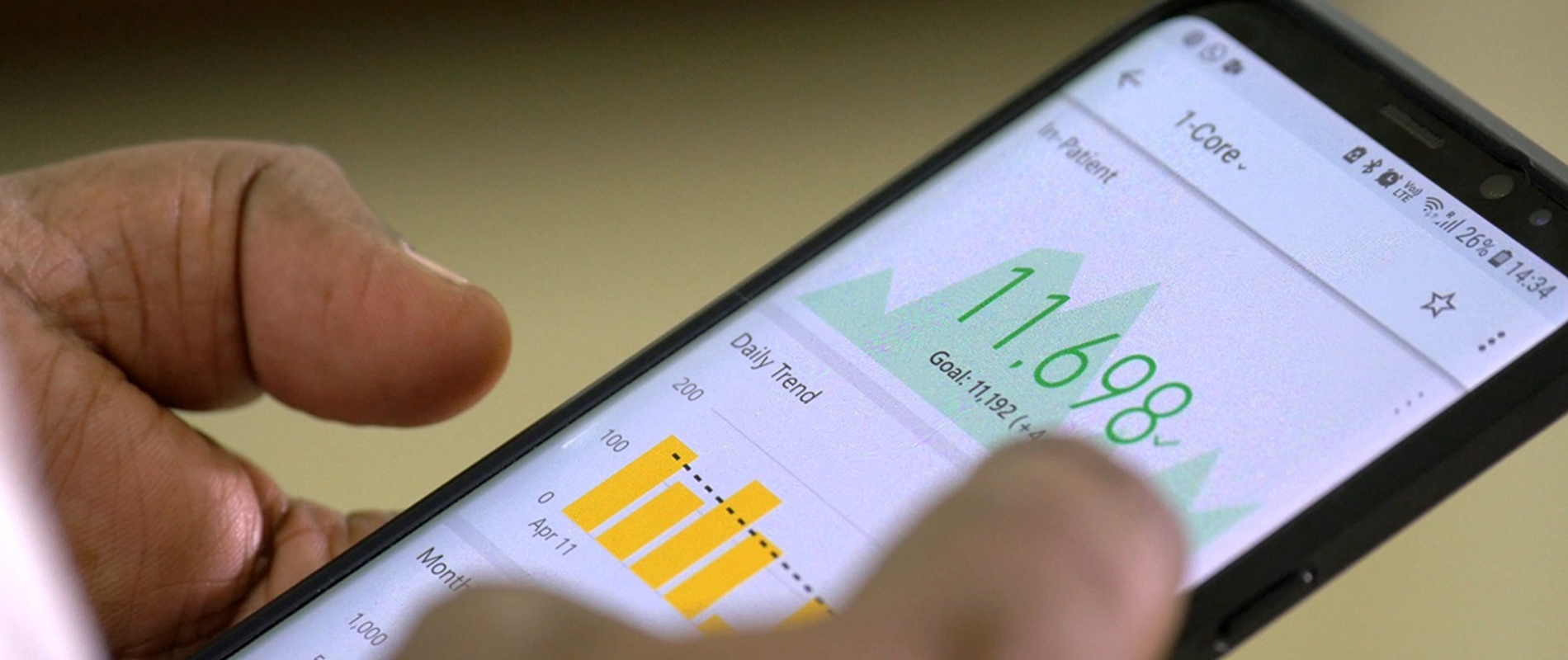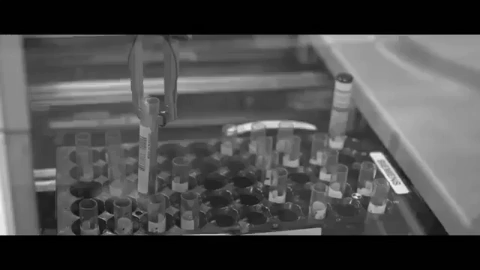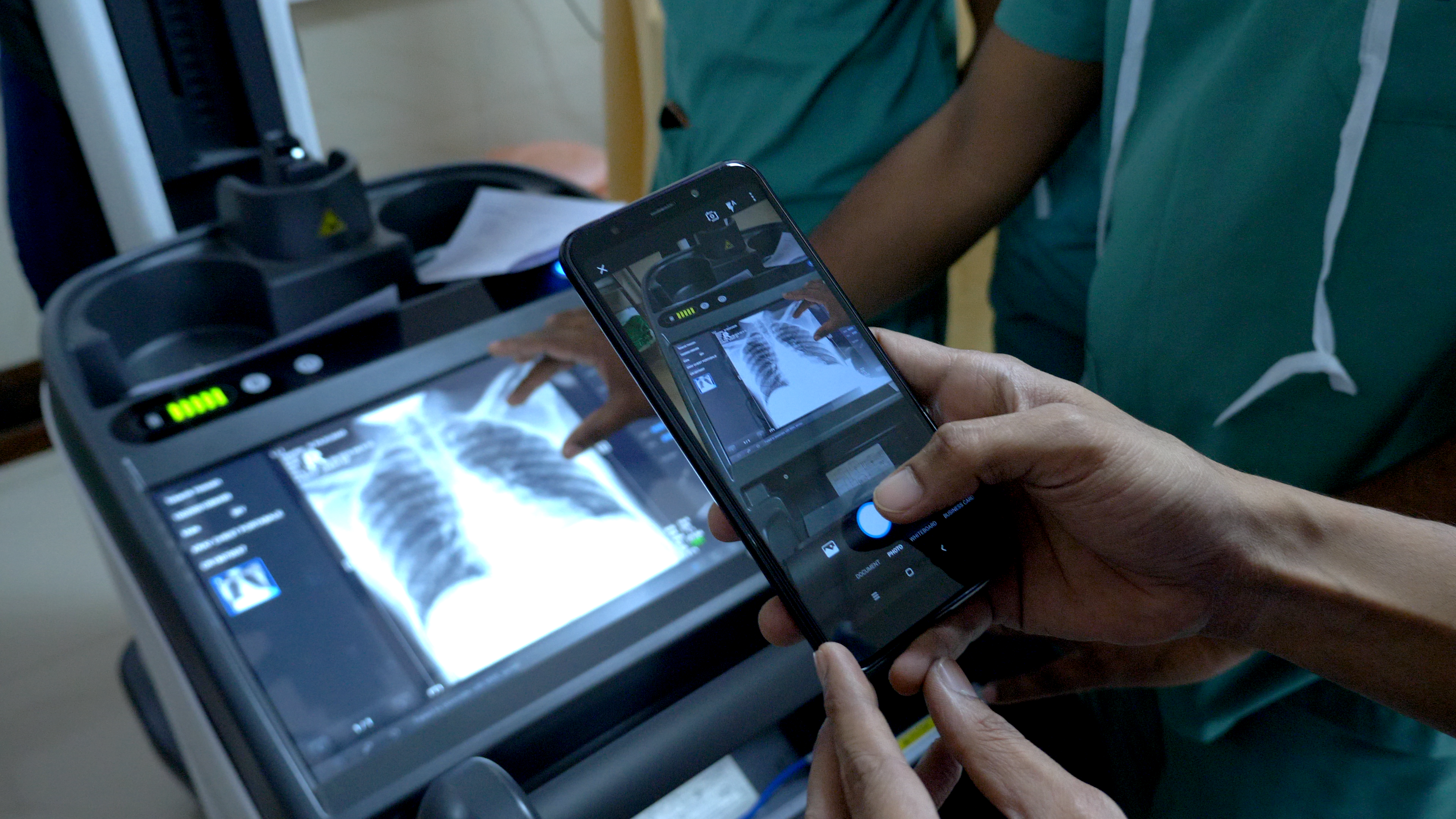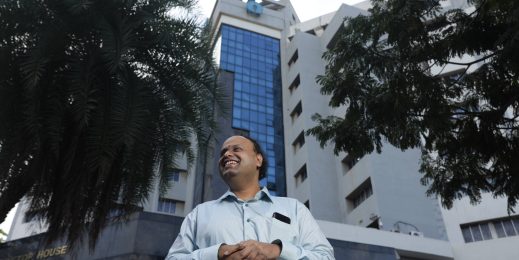
Narayana Health uses data analytics and AI to provide affordable, high-quality healthcare
“How much will the surgery cost?” This is one question that has haunted Dr. Devi Shetty, Founder and Chairman of Narayana Health since he began his practice in 1983. Even today, more than three decades and over 15,000 surgeries later, he dreads the question from his patients.
“As healthcare providers, it is important that we don’t lose sight of the person in the patient. A price-tag approach to human life is unfair not just to the patient but also to our abilities as doctors. There is something dramatically wrong in the way we currently deliver healthcare—cost is a bigger concern than the disease or its treatment. Something has to be done,” says the Padma Shri and Padma Bhushan award winning cardiac surgeon.
To achieve his mission of making healthcare more accessible and affordable, Dr. Shetty founded the Narayana Health group of multi-specialty hospitals in Bengaluru in 2000 with the idea of providing affordable, high-quality healthcare. He started a model where patients were provided a fixed price quote for surgeries when they came to the hospital, rather than having to bear the uncertainty of the bill at the time of leaving the hospital.
Today, the Narayana Health group operates a wide network of hospitals across India. Through a combination of greenfield projects and acquisitions, the Narayana Health network has expanded to over 6,000 beds, 30 different specialties, and an international branch in the Cayman Islands. To keep the model sustainable, Narayana Health has implemented real-time data analytics and predictive insights across their operations running on Microsoft Azure, SQL Server and Power BI.
“Cost reduction and improvement in delivery of quality services can only happen through technology. I believe that digital interventions such as advanced analytics, machine learning and artificial intelligence are key to make healthcare safer, affordable, and accessible to the world’s population,” Dr. Shetty asserts.

In most industries, inefficiency leads to lower output, but for a hospital it can be a matter of life and death. To improve efficiencies across the board, the business analytics team at Narayana Health looked at how it could use the trove of data the hospitals generated. This included operational and financial data from every hospital, as well as clinical records of every surgery done by every doctor across the group, to unlock new insights.
“Earlier, every hospital would extract data from the databases manually and present it at the end of the month. We felt that we could leverage this data better to gain insights from a single place,” says Vivek Rajagopal, Head – Business Analytics and Vice President, Narayana Health.
Even though Narayana Health was an early adopter of the cloud, having moved their operations to Microsoft Azure as early as 2015, getting an analytics model in place was easier said than done, owing to the nascent stage of technology adoption in India’s healthcare industry.
“As we required a lot of customization and to keep costs low we started with developing a proof of concept ourselves with support from Microsoft,” Rajagopal adds.
The business analytics team started creating models that would first replicate the manual process of extracting data on SQL Server and Power BI. They interacted with end-users, which included Narayana Health’s management team, surgeons and other medical practitioners to understand their needs. They also collaborated with Microsoft to implement Power BI dashboards that could provide a unified view of important metrics to the management in real-time irrespective of whether they were on their laptop or smartphone.
“It took us about eight months to come up with a data warehouse architecture, automate the data flows, design meaningful KPIs & metrics, and build a comprehensive framework for analytics and decision making. Once that was ready, implementing Power BI to gain real-time insights was very easy!” Rajagopal exclaims.

With this, the team was not only able to replicate the manual data collection process but was also able to give the management team real-time insights across all hospitals in the company. Apart from financial metrics from every hospital, the Power BI dashboards could throw up real-time data of more than 3,000 doctors across 30 comparable parameters. The implementation has brought about efficiencies, cost savings, and better patient care in ways the team had not even visualized at the beginning of the project.
Real-time decision making: One of the biggest challenges with the existing manual data collection process was that the management team could only get insights at regular intervals. Earlier tracking key financial metrics would involve the senior management reaching out to regional branches. Regional managers would then reach out to individual hospital managers. This hierarchical process could take as many as two to three weeks to complete.
With a centralized system and Power BI dashboards, the leadership team can now track financial metrics in real-time, rework projections instantaneously, and make more informed decisions within hours instead of days. With this, the Narayana Health group has experienced a 70 percent reduction in man-hours spent on reporting and a 50 percent reduction in time towards management reviews.
Predictive analytics for new hospitals: A key requirement of opening a new hospital is to get insights about not only the number of beds but also the healthcare needs of the population in its vicinity, to be able to hire the appropriate team. Armed with historical clinical and patient data, the management can now predict these parameters with more accuracy. The group has been able to standardize processes not just for launching new hospitals but also onboard those it acquires.
Managing nursing staff: A significant challenge for the healthcare industry is high attrition rates among the nursing staff. The team wondered whether data about the nursing staff’s workflow could unlock new insights to help bring down attrition rates. By integrating Power BI to monitor and analyze nurse hours daily, three hospitals within the Narayana Health network experienced an efficiency gain of 15 percent within a month.
“We thrive on granular analysis of data through interactive visualization for richer and faster decision-making. We can accurately forecast under or overstaffing in real-time. We can even predict patient volumes,” says Dr. Ashutosh Raghuvanshi, Group CEO, Managing Director and Vice Chairman, Narayana Health.

Making healthcare affordable for patients
The ability to visualize data from across the group opened new avenues to ensure patients get the best care possible at the most affordable prices. The team at Narayana Health is now unlocking insights from historic data as well as data generated in real-time to optimize costs from the perspective of both patients and business goals.
Faster lab turn-around times: One team looked at how they could minimize the visits a patient has to make to the hospital by ensuring they get their lab test reports on the same day. Using Power BI, they were able to compare the performance of different labs across the network and identify roadblocks as well as best practices. They implemented changes in the clinical processes at one of the units and noticed a 60 percent improvement and close to 95 percent of lab tests were turned around in less than two hours. In many cases, this meant that a patient could consult a doctor, get tests done, and get diagnosis done by the doctor on the same day.
Monitoring consumables and antibiotic use: A Power BI dashboard provides insights about the consumables used by doctors for different surgeries. Thanks to this, the management team has been able to establish an average of consumables used for any kind of surgery and can quickly identify trends and cases of even slightly higher usage, which can impact the cost incurred to the patient.
Another parameter monitored is the administration of antibiotics by doctors. This is an important aspect of patient care to ensure that the antibiotics usage is within the limits prescribed by the internal policy at the hospital, which in turn is aligned to WHO standard recommendations. With this, they can quickly identify any aberration and rectify it across the group.
Predicting blood requirement: Thanks to data being available in the system in real-time, hospitals are now able to predict blood requirements on any given day. This has led to optimal stocking and reducing wastage of blood, which is a critical and scarce component.
Reducing the time spent by patients in the ICU: Narayana Health runs one of the world’s busiest cardiac programs and the world’s largest pediatric cardiac care facility. A constant challenge at the organization is to optimize throughput to match the demand of patients with the limited manpower, assets, and capacity available. With real-time analytics they can monitor patients in the ICU and are able to identify any outliers, who have a longer than average duration of stay for any given surgery. This also allows them to identify any bottlenecks and reduce the patient wait time and stay at the hospital.
Better prediction of surgery costs: All this data analysis eventually circles back to Narayana Health’s core mission of providing affordable, high-tech healthcare. Before the implementation of data analytics, the quotes were updated periodically. Now, they can formulate a very narrow band of the expected cost of a treatment, based on multi-year data of the relevant procedures and costs.

Bringing AI to healthcare
Excited by the possibilities, Narayana Health is looking at new avenues to optimize its operations and augment patient care with technology. One of the ongoing projects being piloted internally is to use Artificial Intelligence to decipher X-Rays to point out any irregularities from a normal X-Ray, which would help doctors save time.
“Eighty percent of the world population has no access to reliable and affordable healthcare. My goal is to ensure that everyone on this planet has access to high-tech healthcare, with dignity,” concludes Dr. Shetty.
















